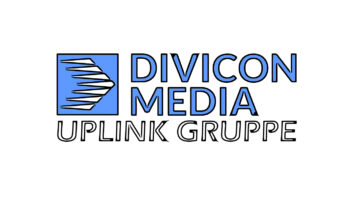You can bet SiriusXM executives are watching what’s happening in the radio dashboard in new vehicles as closely as terrestrial radio broadcasters these days. They know those headwinds AM radio has been facing could also someday blow in the face of the satellite radio broadcaster.
SiriusXM CEO Jennifer Witz, on a recent on Decoder podcast on The Verge website, talked to host Nilay Patel about a variety of audio topics, including the satellite brand’s 360L platform, podcasting, streaming and how the company is handling the desire of automakers to transition to premium services in the dashboard.
As vehicle dashboards become integrated computing devices, Witz says the ability of SiriusXM to generate revenue for automakers is noteworthy. “From day one, we’ve shared in the subscription revenue with our partners, and I think not only does that differentiate between us and other media services because we have the margins to be able to support that, but it also helps us engage with the OEMs to make sure that we have the same incentives, that the service is prominently displayed on the screen.
“That we’re getting information on the customers so we can market, sending that direct mail that you get, or emailing customers, making sure that the trial’s actually on, and it’s very easy to get into the service after you’ve bought the car,” Witz says on the podcast.

Changes in the dashboard are nothing new, she says, since infotainment in the car has been evolving for years. “And we’ve really been at the forefront of that, making sure that we’re designing for those new infotainment systems, working closely with the OEMs but also, in some cases, working closely with, say, Google, who’s launching Android Automotive, the operating system in the cars. That’s going to give us a lot more flexibility, too, because we can update our service quarterly or so just like every other media app, but also, we’ll be represented in multiple places in that screen as well.”
Witz says she believes about 70 percent of OEMs have said they are going to adopt the Android Automotive operating system. “Ultimately, we’re agnostic about what distribution we use. So we will always have an integrated radio experience in the car with the receiver, and ideally going forward, our best platform is 360L in terms of providing the best experience for the consumer because satellite delivery allows for uninterrupted delivery of our service across the U.S.”
She continued: “Of course, with modems, there are always going to be dropouts in less heavily networked areas of the country, whether urban or less dense areas. So that is a real benefit to satellite delivery. But with the IP delivery, we can actually customize the service in ways that all the other media services can do.”
Ritz on the podcast said it’s clear automakers do not want to give up control (of the dashboard), so they’re trying to find the areas where the Big Tech companies can assist them. But ultimately, they can still control the user interface and try to participate more in the services business.
“So we have to be really flexible, and we really have been for 20 years, because we’ve had to design for these different automotive UIs (User Interface) since inception, and it was more hardware and less software, and over time, it’s shifted to even more software.”
[Read more stories about the future of AM radio in cars]
In discussing SiriusXM 360L on the Decoder podcast, she says the platform delivers content from both satellite and through streaming via internet access via onboard modems.
“The content that we provide over satellite is really broadcast, right? One too many. The pipe is only so big; you can only put so many channels on the air. But increasingly, with our new platform that’s rolling out, which we call 360L, we can have a lot more interactivity in our service, whether it’s just recommendations or more content in general. But as you mentioned, we have much broader distribution,” Witz said on the podcast.
SiriusXM 360L allows for an unlimited amount of content, she says. “It’s rolling out slowly. About a third of our new car trial starts are 360L-capable today, but that’s only about 8 million cars on the road.”
Satellite radio is still the core of SiriusXM’s business, Witz says. In fact, SiriusXM is launching four more satellites over the next few years.
“The vast majority of our subscribers today are focused on listening in the car with the radio that’s embedded in the car, but streaming allows us to leverage in cars that may not have a satellite radio or even in cars that do but maybe as a second listening point in a vehicle you just want to stream, so you can listen to the app through CarPlay, Android Auto, and increasingly, we’ll have better features there as well,” she says.
The U.S. satellite-radio company, which is part of Liberty Media, was forced to lay off nearly 8 percent of its workforce (475 jobs) earlier this year. Witz said on the podcast: “We came into this year knowing that both auto sales and ad sales were going to continue to be soft for some period of time. We’re a public company, we’re delivering value to our shareholders as well, and we’re very focused on making sure that we have discipline around our spending, and we looked at every aspect of the cost structure.”
She continued: “We did a lot of work last year to not have to address the people side, and we came into this year with a really thoughtful strategic approach to not only reduce costs but also to look at the business and make sure that we could be more effective and efficient.”
SiriusXM, which also owns Pandora and Stitcher, is preparing to launch “the next-generation user experience,” she said.
“It starts with a launch later this year in the fourth quarter with a set of new streaming apps, but also the first step in re-architecting everything, all the foundational capabilities — really addressing every consumer touchpoint with better commerce, identity and MarTech data capabilities.
“That foundational experience will improve relevance, ease of use, and value for our subscribers and prospective trailers and really go toward addressing these pain points that we’ve talked about, whether it’s flexibility on price or more control and discovery. And it’s going to help enhance the streaming experience — if you’re a streaming-only subscriber or if you’re an in-car subscriber, whether you’re leveraging satellite only or 360L, it’ll help with your listening behaviors outside of the car, which are delivered by streaming or the streaming infrastructure that supports 360L.”











